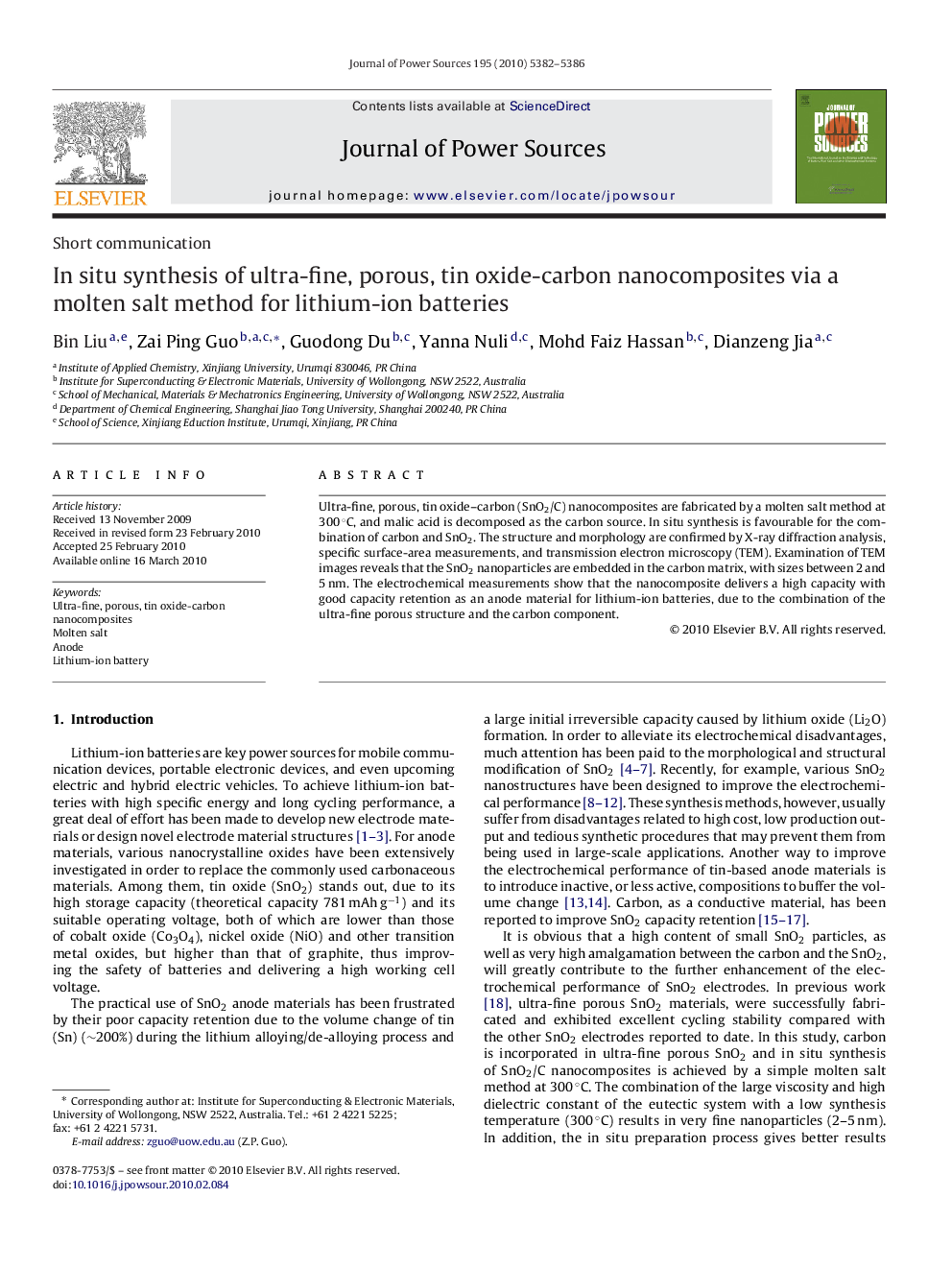| Article ID | Journal | Published Year | Pages | File Type |
|---|---|---|---|---|
| 1284938 | Journal of Power Sources | 2010 | 5 Pages |
Ultra-fine, porous, tin oxide–carbon (SnO2/C) nanocomposites are fabricated by a molten salt method at 300 °C, and malic acid is decomposed as the carbon source. In situ synthesis is favourable for the combination of carbon and SnO2. The structure and morphology are confirmed by X-ray diffraction analysis, specific surface-area measurements, and transmission electron microscopy (TEM). Examination of TEM images reveals that the SnO2 nanoparticles are embedded in the carbon matrix, with sizes between 2 and 5 nm. The electrochemical measurements show that the nanocomposite delivers a high capacity with good capacity retention as an anode material for lithium-ion batteries, due to the combination of the ultra-fine porous structure and the carbon component.
